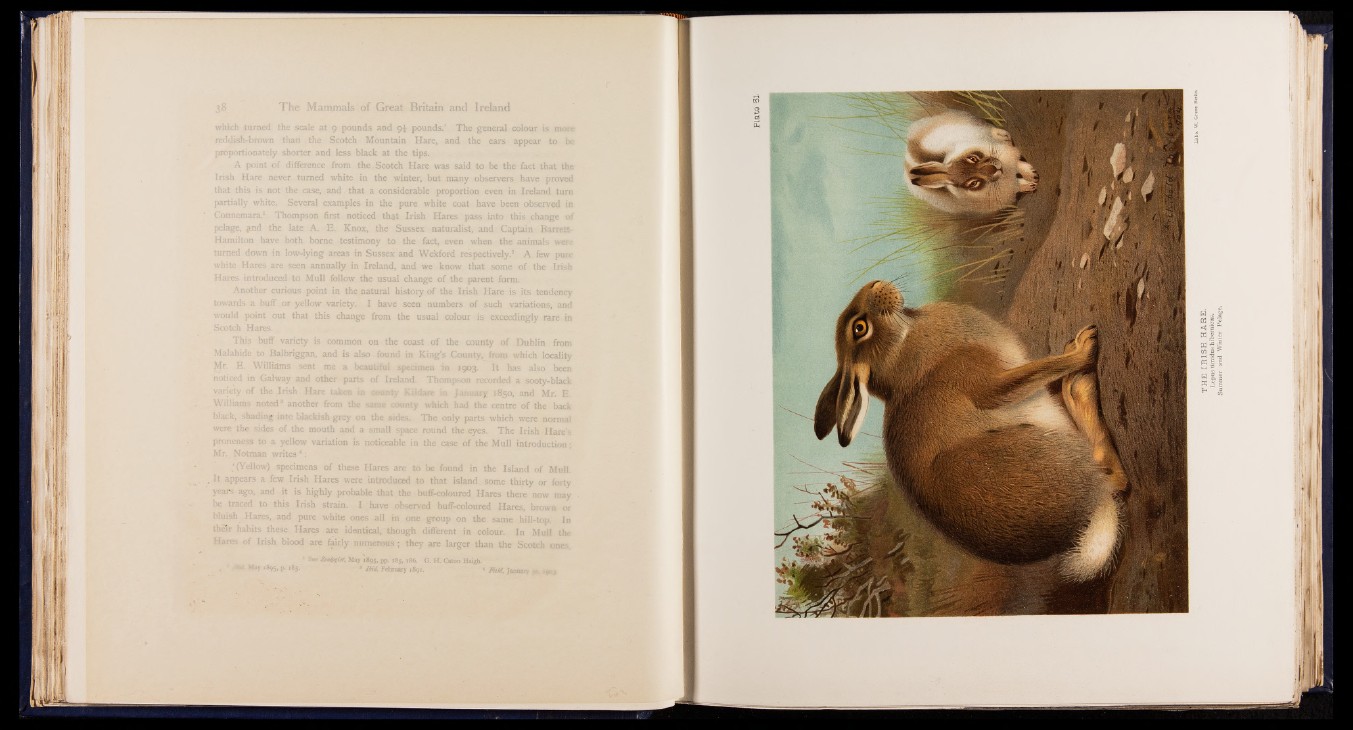
which turned the scale at 9 pounds and 94 pounds.’ The general colour is more
reddish-brown than the Scotch Mountain Hare, and the ears appear to be
proportionately shorter and less black at the tips.
A point of difference from the . Scotch Hare was said to be the fact that the
Irish Hare never turned white in the winter, but many observers have proved
that this is not the case, and that a considerable proportion even in Ireland turn
partially white. Several examples in the pure white coat have been observed in
Connemara.1 Thompson first noticed that Irish Hares pass into this change of
pelage, gnd the late A. E. Knox, the Sussex naturalist, and Captain Barrett-
Hamilton have both borne testimony to the fact, even when the animals were
turned down in low-lying areas in Sussex and Wexford respectively.8 A few pure
white Hares are seen annually in Ireland, and we know that some of the Irish
Hares introduced to Mull follow the usual change of the parent form.
Another curious point in the natural history of the Irish Hare is its tendency
towards a buff or yellow variety. I have seen numbers of such variations, and
would point out that this change from the usual colour is exceedingly rare in
This buff variety is common on the coast of the county of Dublin from
Malahide to Balbriggan, and is also found in King’s County, from which locality
Mr. E. Williams sent me a beautiful specimen in 1903. It has also been
noticed in Galway and other parts of Ireland. Thompson recorded a sooty-black
variety of the Irish Hare taken in county Kildare in January 1850, and Mr.' E.
Williams noted8 another from the same county which had the centre of the back
black, shading into oiackish grey on the sides. The only parts which were normal
were the sides of the mouth and a small space round the eyes. The Irish Hare's
proneness to a yellow variation is noticeable in the case of the Mull introduction;
.‘ (Yellow) specimens of these Hares are to be found in the Island of Mull.
It appears a few Irish Hares were introduced to that island, some thirty or forty
years ago, and it is highly probable that the buff-coloured Hares there now may
be traced to this Irish strain. I have observed buff-coloured Hares, brown or
bluish Hares, and pure white ones all in one group on the same hill-top. In
their habits these Hares are identical, though different in colour. In Mull the
Hares of Irish blood are fairly numerous; they are larger than the Scotch ones.,
May 1895, pp. 185* 186. G. H. Cat on Hugh.
. I Ibid. February 1891.
ofagist,
FU!dt January jo, 2903.